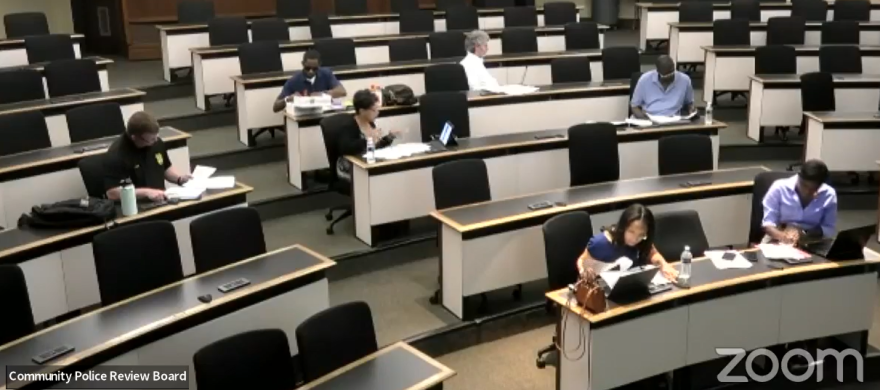The Albany Community Police Review Board continues to develop a Discipline Matrix in collaboration with the city police department.
At its latest meeting the CPRB Standing Committee on Discipline Matrix continued its work to "develop clear and consistent expectations of penalties and sanctions based on the seriousness of substantiated police misconduct after a completed investigation," which also entails "a clear understanding of the consequences of misconduct" for both police and public.
The panel had previously settled on modeling its matrix after one used by police in Baltimore as it looks for ways to properly categorize misconduct violations and assign levels of discipline or corrective action to be meted out based on the severity of the violation.
Board member John Levendosky says the board merged a list of 10 categories of misconduct violations provided by the Albany Police Department with feedback from a community survey and came up with a total of 20. Panelists worked on establishing levels of severity. Discussion included police body cameras. Levendosky cited a recent incident he says poses questions about severity.
"An officer wasn't involved with actively not having their body camera on or turning it off when interacting with public," said Levendosky. "It was a situation where body cameras should be while on patrol on standby. So if you get out of your car, it's turning itself on. The officer for whatever reason didn't activate that. They were involved in a car accident. They show that they weren't, the cam was not on standby. It wasn't that they were actively not, you know, turning it off while engaging with the public or trying to hide something. They didn't use their body camera correctly, but it wasn't a situation that they were actively trying to obstruct, or mislead or hide something. Would that be something we differentiate with regards to the body worn cameras?"
Board member Paul Collins-Hackett responded:
“With the intentional versus unintentional, that kind of unintentional thing, in my view would be one of the first steps, the initial things, that has a much lesser consequence than the aggravated offence of intentionally doing that," Collins-Hackett said. "And the thinking is that when we actually do lay out the matrix, the intentional violation would fall somewhere to the right of the unintentional violation.”
Other topics the panel discussed included police conduct, use of force and categorization of lethal versus non-lethal weapons. Collins-Hackett says there's a fine line:
“The only thing I want to just raise as a point, I understand we're not even 100% there yet," said Collins-Hackett. "But even in that distinction, even keeping in mind that the non-lethal weapons when we're assigning consequence and whatnot, how they have become lethal weapons in the past. So when deciding what those consequences look like, I just want to keep that in mind that even the non-lethal ones, specifically we have Dontay Ivy, who was tased to death, you know, those kinds of things, that I want to be mindful that we still treat them with the same, you know, utmost respect."
As the meeting neared conclusion, Board Chair Nairobi Vives called for a vote on categorizing severity levels of misconduct.
“We haven't voted on the whether or not we're going to do four but we are going to use the more accessible language of minor, moderate, major," said Vives. "So moving on to the fourth category, maybe we just table that and try to define what we see as minor, moderate, major, if we, if we need a fourth. And we can we can keep that for next time.”
CPRB's next Albany Matrix meeting is June 14. In a related development, Monday night the Albany Common Council passed Local Law Q of 2022, which codifies the relationship between the Public Safety Commissioner and the Community Police Review Board by requiring the CPRB's recommendations, where relevant, to be considered in a final, written finding of discipline by the Commissioner. The vote was 12 to 1.





